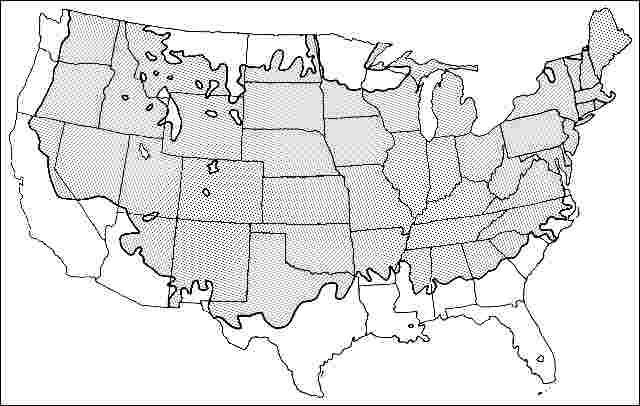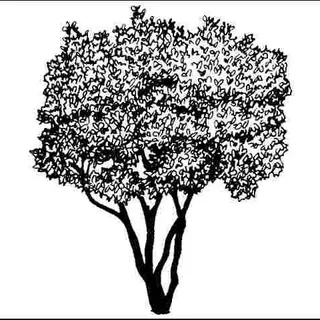Viburnum sieboldii 'Seneca': 'Seneca' Siebold Viburnum
Introduction
Most often grown as a large multi-trunked shrub or small tree, Siebold viburnum only reaches about 20 feet high (occasionally to 30 feet) and 10 feet wide, creating an upright silhouette with short, firm branches. The two to six-inch-long by 1.5- to 3-inch-wide, dark green leaves give off a pungent odor when crushed and have been known to give an occasional autumn display of red or purple color although typically there is no fall color. In late May, the plant is covered with three to six-inch-diameter clusters of off-white, tiny blossoms. These blooms are followed by small, half-inch, pinkish-red fruits which ripen to dark blue or black from August to October, and are held above the foliage, making them an easy target for the birds who find them a delectable treat. There are extremely showy for a period of about two weeks. The cultivar `Seneca' has very firm fruits which are not eaten by birds and provide for a much longer fruit effect than the species. It is preferred over the species because of the extended fruiting effect.

Credit: UF/IFAS
General Information
Scientific name: Viburnum sieboldii
Pronunciation: vye-BER-num see-BOLE-dee-eye
Common name(s): 'Seneca' siebold viburnum
Family: Caprifoliaceae
USDA hardiness zones: 4A through 7B (Figure 2)
Origin: not native to North America
Invasive potential: not assessed/incomplete assessment
Uses: hedge; specimen; deck or patio; street without sidewalk; highway median; tree lawn 3–4 feet wide; tree lawn 4–6 feet wide; tree lawn > 6 ft wide; sidewalk cutout (tree pit)

Credit: UF/IFAS
Description
Height: 20 to 30 feet
Spread: 10 to 12 feet
Crown uniformity: irregular
Crown shape: upright/erect
Crown density: moderate
Growth rate: moderate
Texture: coarse
Foliage
Leaf arrangement: opposite/subopposite (Figure 3)
Leaf type: simple
Leaf margin: crenate, serrate
Leaf shape: elliptic (oval), obovate
Leaf venation: brachidodrome, pinnate, bowed
Leaf type and persistence: evergreen, fragrant, broadleaf evergreen
Leaf blade length: 2 to 4 inches, 4 to 8 inches
Leaf color: green
Fall color: no color change
Fall characteristic: not showy

Credit: UF/IFAS
Flower
Flower color: white/cream/gray
Flower characteristics: showy
Fruit
Fruit shape: oval
Fruit length: less than 0.5 inch
Fruit covering: fleshy
Fruit color: red, black
Fruit characteristics: does not attract wildlife; showy; fruit/leaves not a litter problem
Trunk and Branches
Trunk/bark/branches: branches don't droop; showy; typically multi-trunked; thorns
Pruning requirement: needed for strong structure
Breakage: resistant
Current year twig color: gray
Current year twig thickness: thick
Wood specific gravity: unknown
Culture
Light requirement: full sun, partial sun, or partial shade
Soil tolerances: clay; sand; loam; slightly alkaline; acidic; well-drained
Drought tolerance: moderate
Aerosol salt tolerance: moderate
Other
Roots: not a problem
Winter interest: no
Outstanding tree: yes
Ozone sensitivity: unknown
Verticillium wilt susceptibility: susceptible
Pest resistance: free of serious pests and diseases
Use and Management
Best used as a specimen or patio tree where there is plenty of soil space for root expansion. Provides nice scale to a small landscape but is also suited for planting in mass or on 15 to 25-foot centers along a boulevard or entrance road to a commercial landscape. The multi-trunks twist as they grow providing a nice formal Oriental effect.
Siebold viburnum should be grown in full sun or partial shade on moist, well-drained soils, acid or alkaline. Leaves will show evidence of scorch if soil dries out, but this appears to be a drought avoidance mechanism causing little permanent damage.
Propagation is by cuttings which root easily.
Pests and Diseases
No pests or diseases are of major concern.



